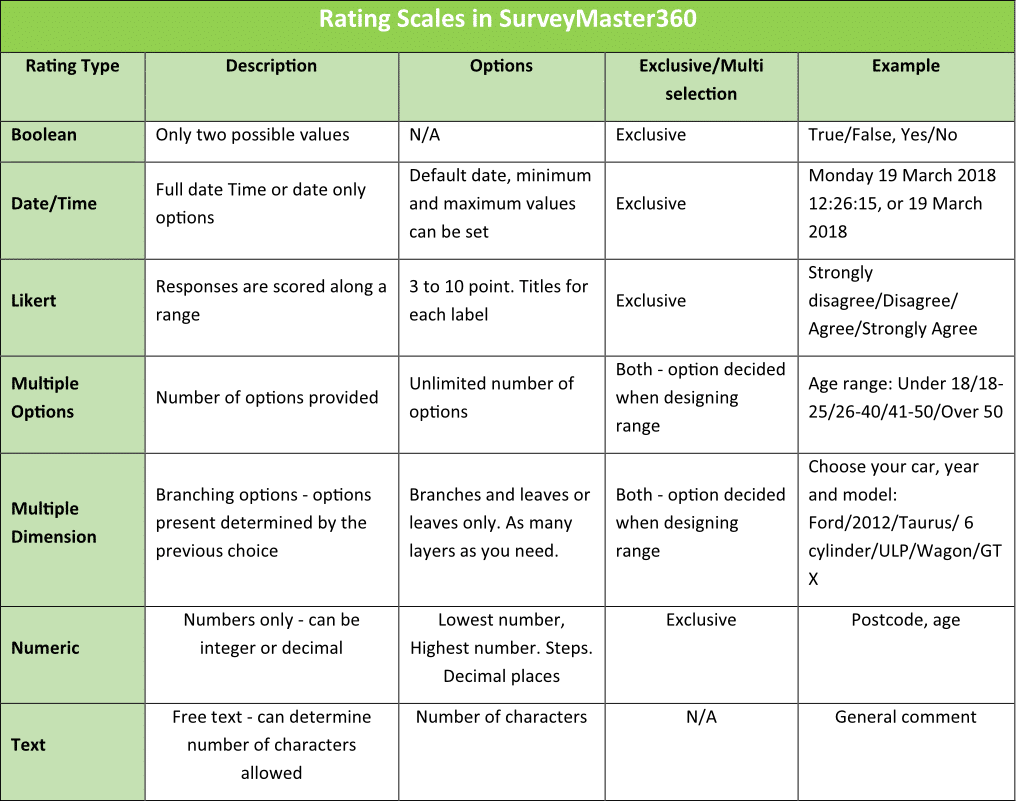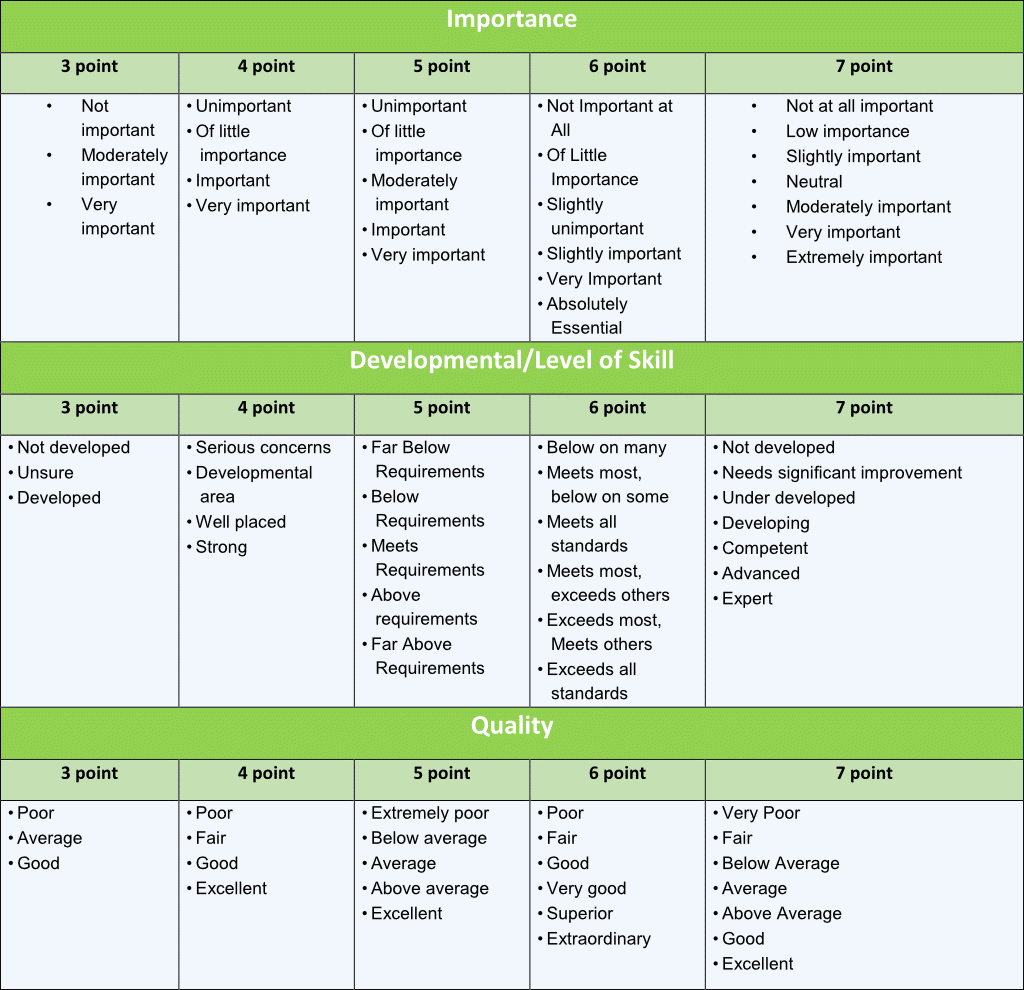
Our Approach
Rating scale formats used in surveys vary depending on the type of question being asked. An answer type can be as simple as a choice between “Yes” or “No” or “True” or “False”. More complex rating scales provide multiple response options quite often using a Likert scale.
All response scales have their own advantages and disadvantages, but the rule of thumb is that the best response scale to use is the one which can be easily understood by respondents and interpreted by the researcher.
SurveyMaster360 rating scales are fully customisable. SurveyMaster360 rating categories include:
- Boolean
- Date/Time
- Likert
- Multiple options
- Multiple dimension
- Numeric
- Text

Balanced or Unbalanced?
A 360 degree questionnaire is quite often made up of Likert rating scales. It is a personal preference whether you use an even number of labels; in which case, there is no mid-point; or an odd-numbered system where there is a mid-point. SurveyMaster360 can handle both.
In many cases, you will be asking behaviourally based questions. These questions lend themselves to scales of frequency, satisfaction, competence or performance. While there is conjecture about mid-point scales, one thing is clear from the research – scales should be balanced.

In the unbalanced example above, the psychological distance between the labels is uneven. This is likely to cause respondent confusion and lead to inaccurate data.
Likert-type, or frequency scales, use fixed choice response formats to measure attitudes or opinions. Here are some examples:

Next Steps…
Talk to us today about how we can assist you on +617 3123 5577 or click the button to ask us to contact you.
